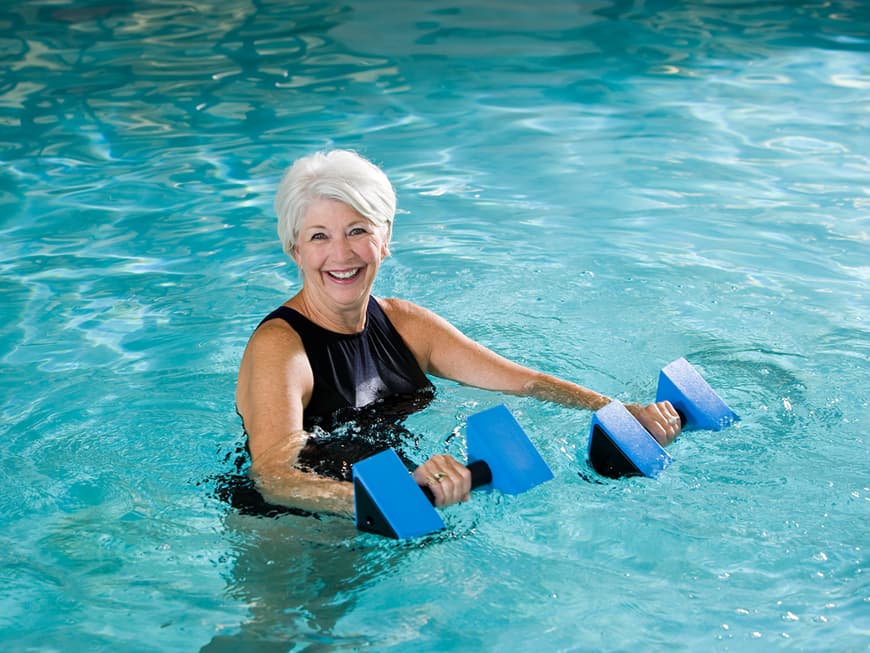
Functional training keeps joints flexible
Doris also regularly attends the functional training sessions organized by the Rheuma League in her home town. The doctor prescribed it for her. She does special exercises there to relieve her rheumatic pain and keep her ailing joints flexible without overstraining them. Functional training is available as warm water or dry gymnastics.
The 64-year-old enjoys it more in the wet element. She is now looking forward to her vacation. She will spend it at a spa whose mineral spring is rich in sulphur. This is because sulphur is an important building block for the development of joint cartilage. This is why sulphur baths are so beneficial for rheumatic diseases. If the sulphur in the sulphur bath reaches the blood through the skin, it also has a soothing and anti-inflammatory effect on rheumatic pain.
Of course, the temperature of the water also contributes to the healing effect. This warming effect is in turn enhanced by the sulphur in the water. The muscles throughout the body can relax.
Sulphur: best effect in a single bath
As pleasant as a stay in a sulphur-containing thermal bath can be, sulphur only really unfolds its effect against rheumatism in a single bath in the tub. If chlorine is added to the water in larger pools for reasons of hygiene, this converts the sulphur in such a way that it loses its therapeutic effect.
Regular exercise and sulphur baths are not the only ways to alleviate rheumatic complaints without medication. Many sufferers make a cold curd compress for acute inflammation. The best way to do this is to spread a half centimeter thick layer of curd cheese on a cloth and then fold the cloth. The resulting compress is then placed on the affected joint. It can be secured with a gauze bandage. The compress should be removed before it heats up. This is because heat could aggravate the inflammation in the joint.
What else can sufferers do to alleviate rheumatic complaints? If you carry too many kilos around with you, you should try to lose weight, especially if rheumatism affects joints that have to bear weight. Every kilo is an additional burden on the diseased joints. A change in diet is also often helpful. People who eat a lot of meat and sausage, for example, consume high levels of arachidonic acid. This promotes inflammatory processes. It is therefore advisable to reduce your consumption of meat and sausages and, if you do, to eat mainly low-fat varieties. Animal fats, such as butter and lard, should be avoided wherever possible.
Omega-3 fatty acids, which are mainly found in fish such as salmon, mackerel and herring, have an anti-inflammatory effect. Two fish meals per week are recommended. Vegetable oils that contain a lot of omega-3 fatty acids, such as linseed oil, rapeseed oil and walnut oil, should also be consumed. Alcohol increases inflammatory processes A diet rich in fresh fruit and vegetables, wholegrain products and pulses is best. As alcohol can increase inflammation, it is better to limit its consumption.
Relieving rheumatic pain with moor
Moor keeps its temperature for a long time. Ready-made moor cushions are practical. They can be heated to 38 to 55 degrees in a water bath or microwave for chronic complaints or kept in the fridge for two hours for acute inflammation before being placed on the area of pain.
